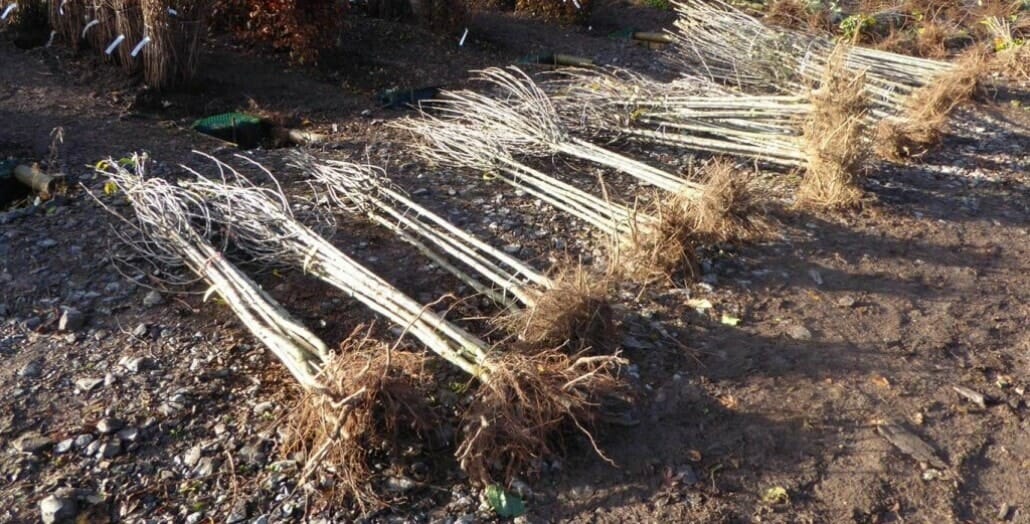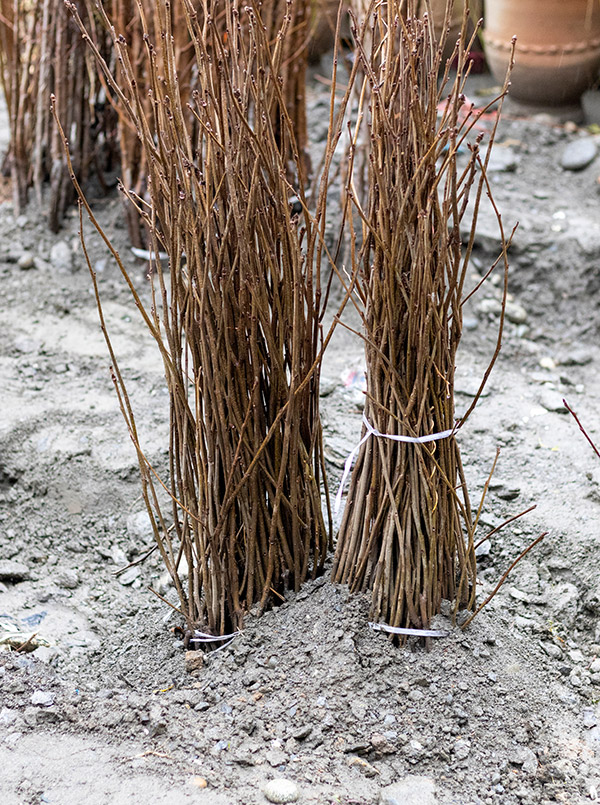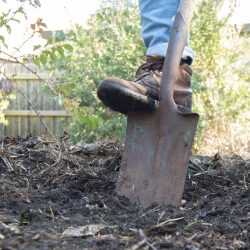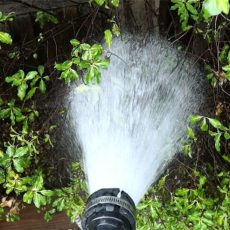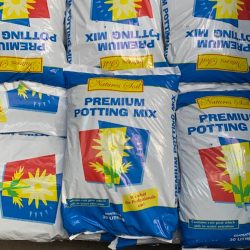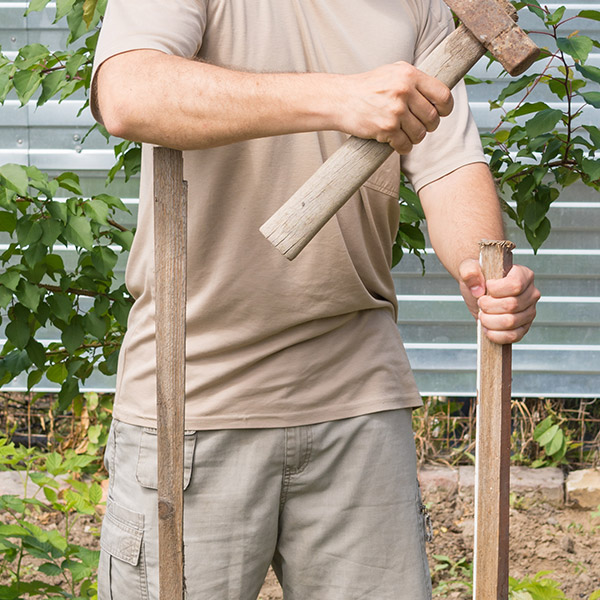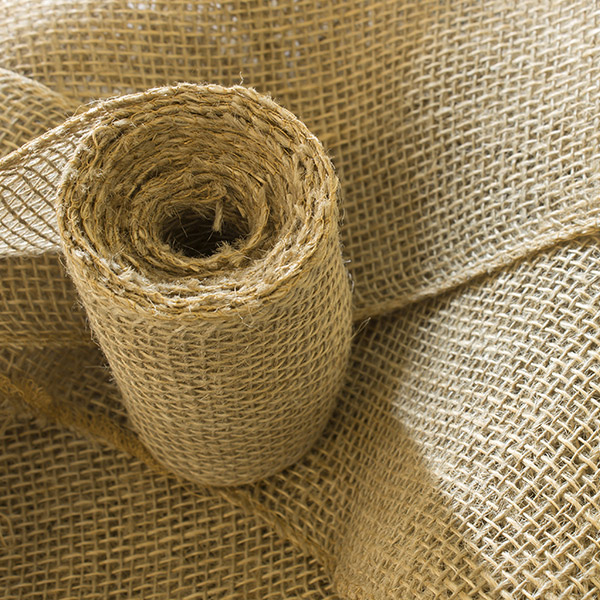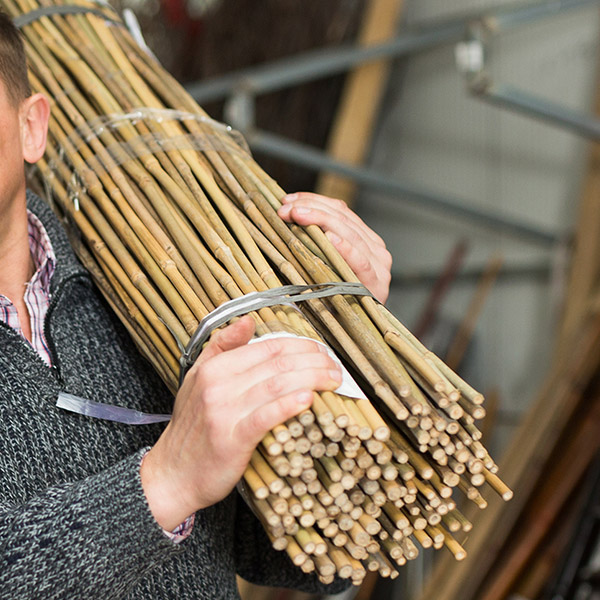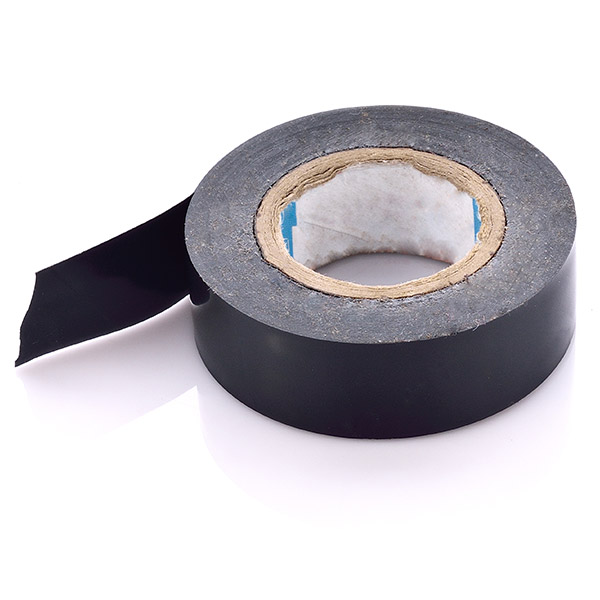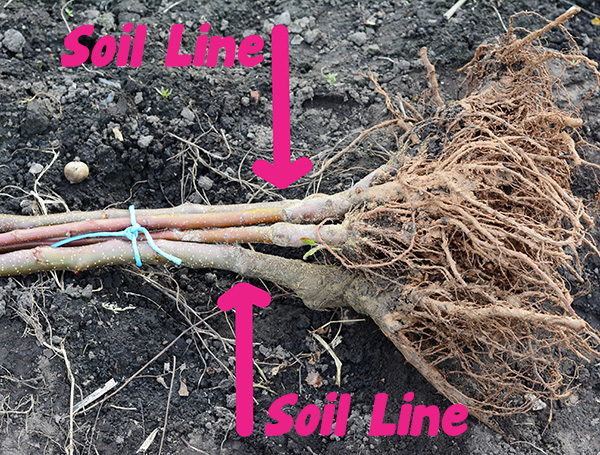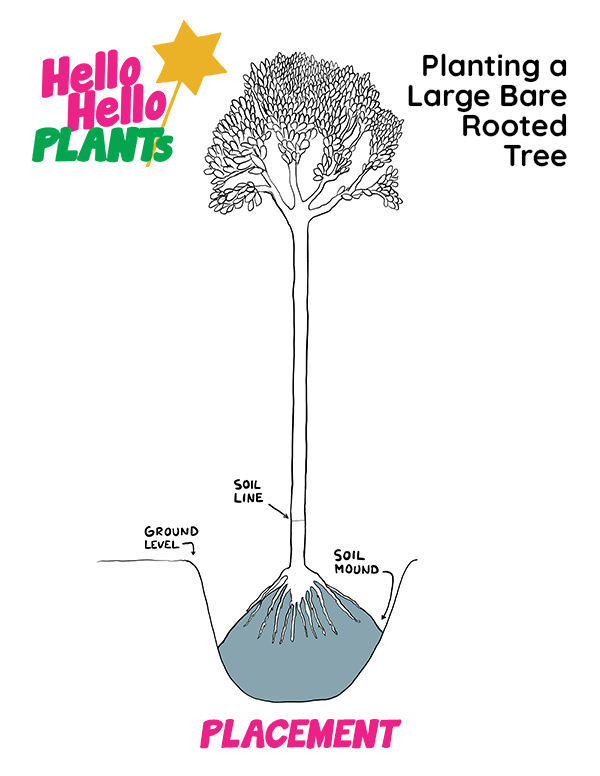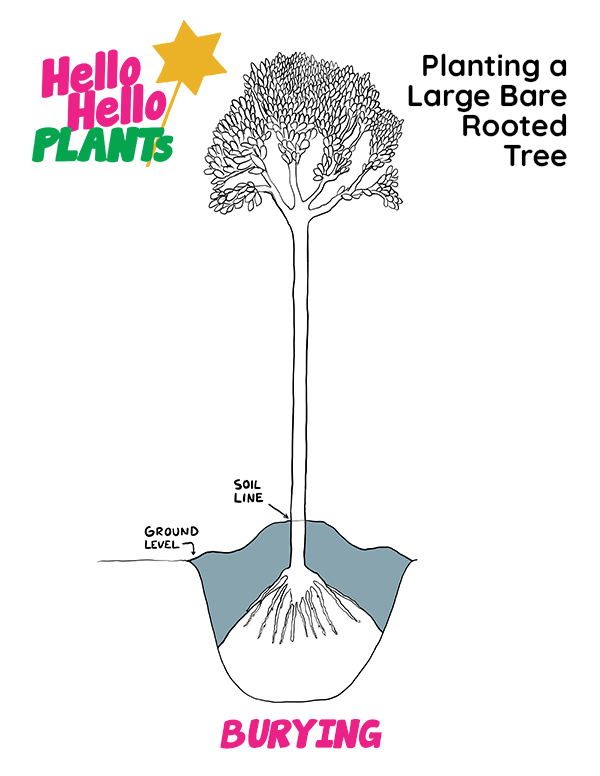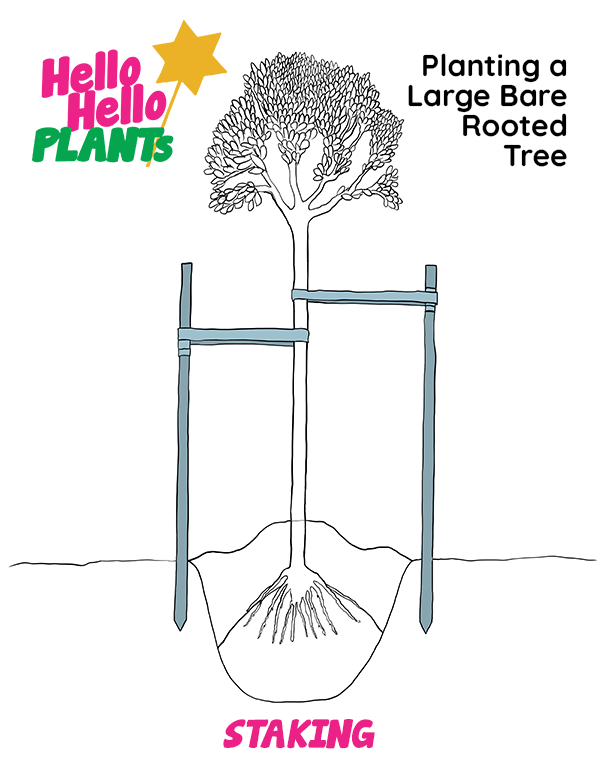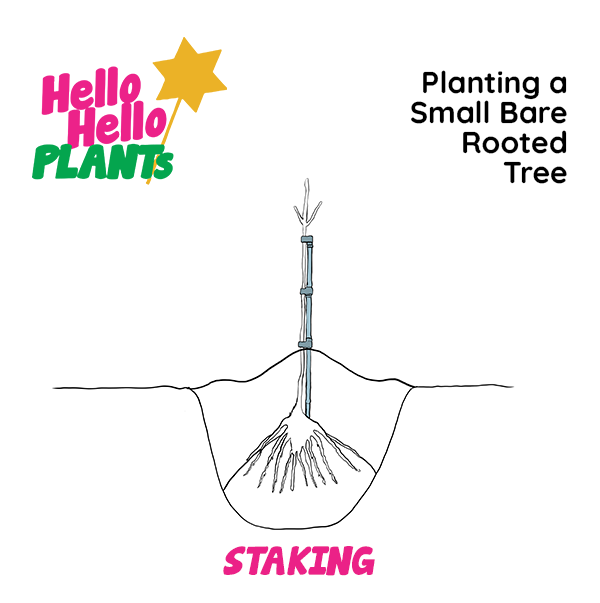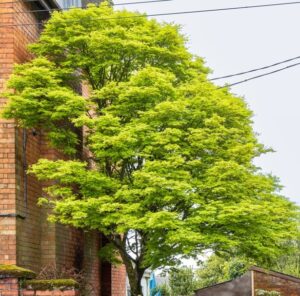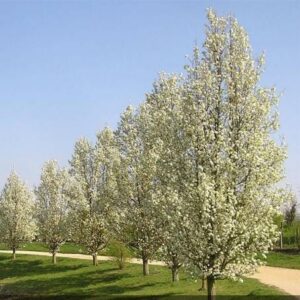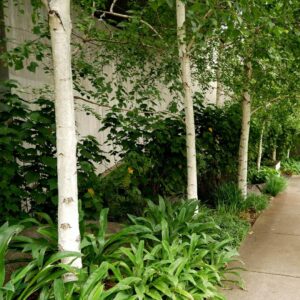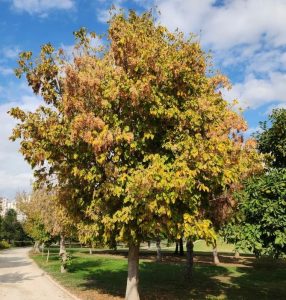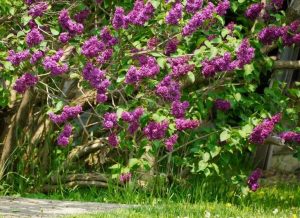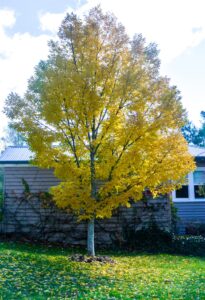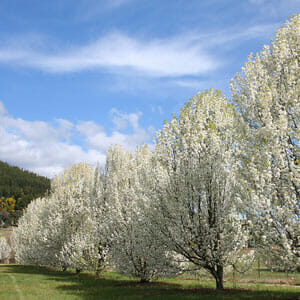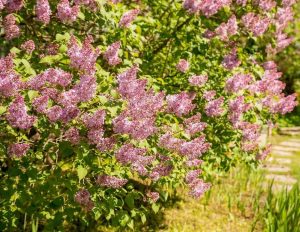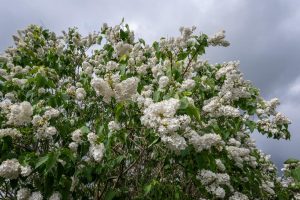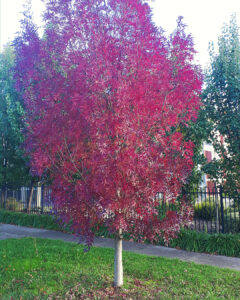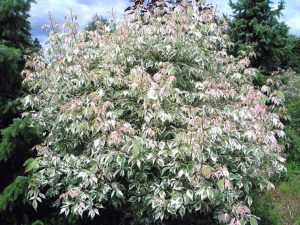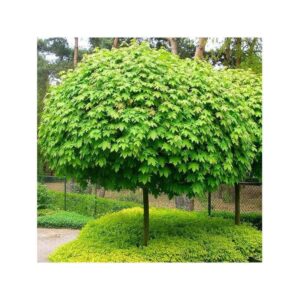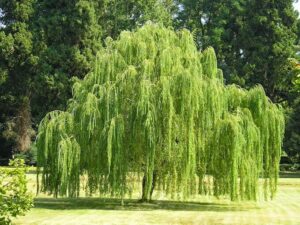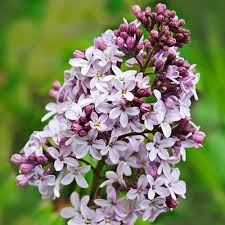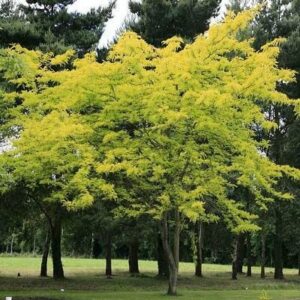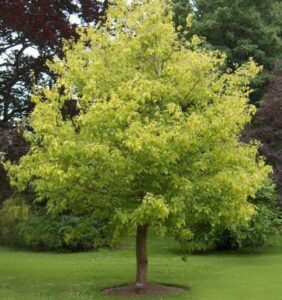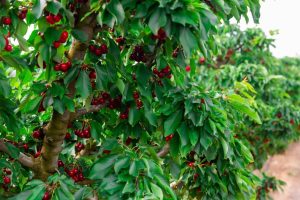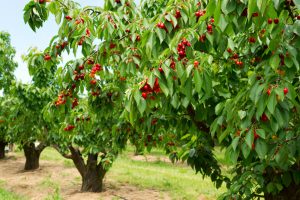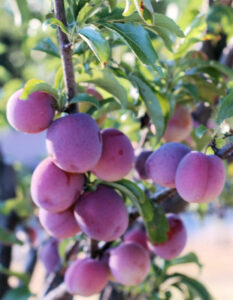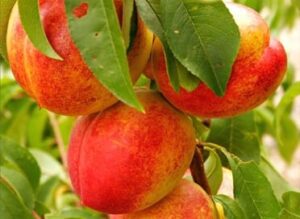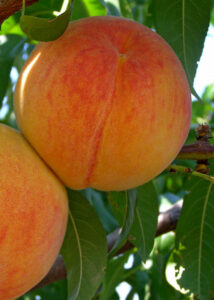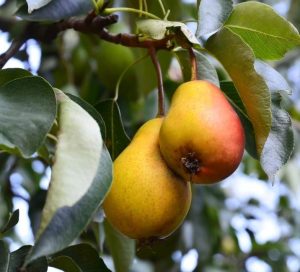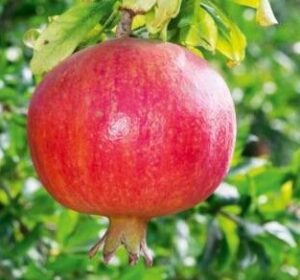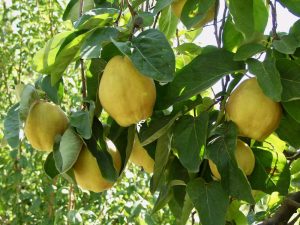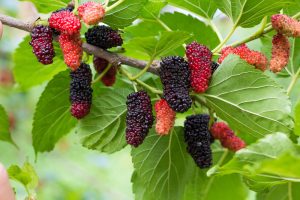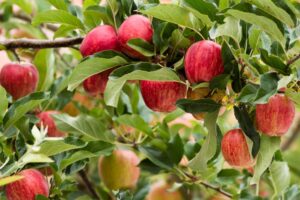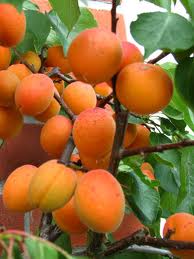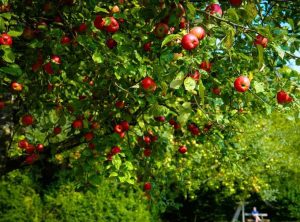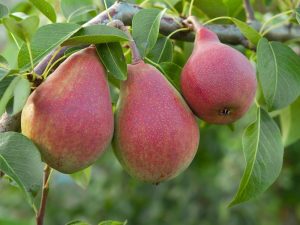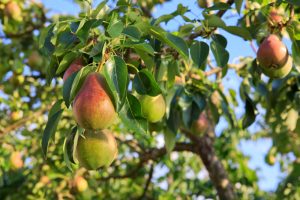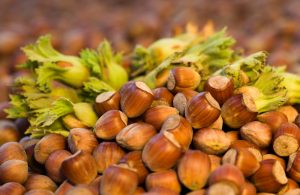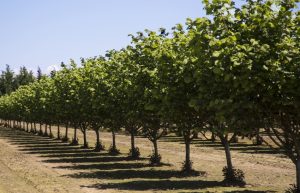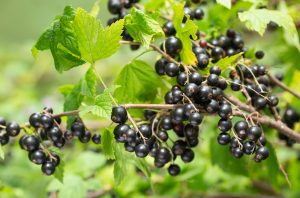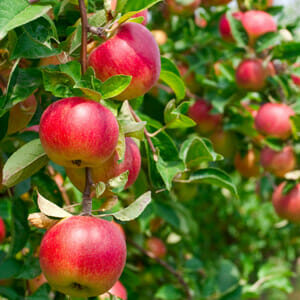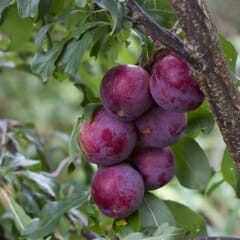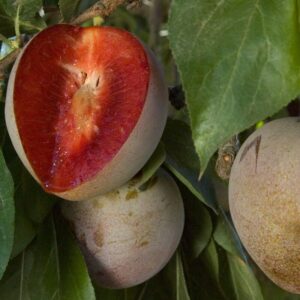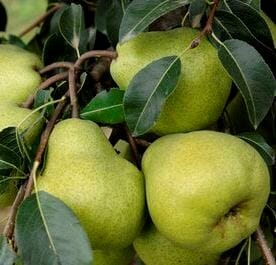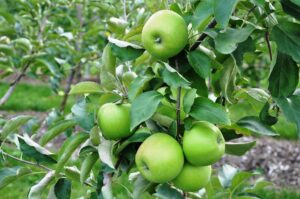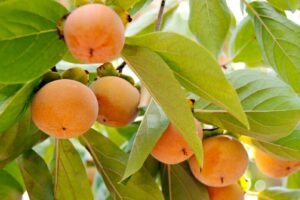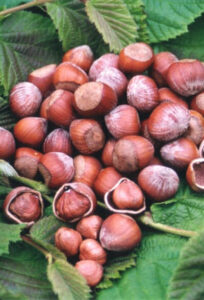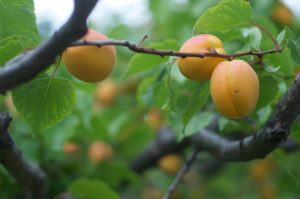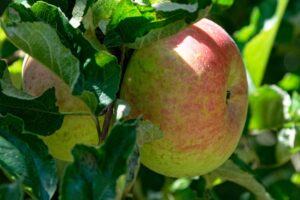Planting bare rooted trees is a great way to quickly establish a screen, avenue, feature tree, orchard, forest, you name it. The benefits include:
- Cheaper cost: Most bare rooted plants are at least 25% cheaper than the same size sold in a pot. Sometimes they can be over 75% off the normal price.
- Bigger trees: If you plant a bare rooted tree, you are usually getting a more mature, larger tree for your money.
- Less work: Bare rooted trees are easier to transport and plant, without the weight and bulk of the pot and it’s heavy soil contents weighing you down.
For more information about bare rooted trees and plants, check out our fact sheet on the horticultural tradition of bare rooting.
Planting a bare rooted tree is not that different to planting an ordinary tree that came in a pot. However, there are a few important points that you need to be aware of, so that your bare rooted “sleeping beauty” wakes up in spring and bursts into life.
When are you planting your bare rooted tree?
If you have just purchased or received bare rooted trees, you should store them based on when you plan to plant them. Planting must be done before warmer spring weather arrives in your location.
Today – Go straight to our planting instructions.
In the next few weeks– Open the bag and give the roots a quick water. Then re-cover with the plastic to protect the roots. Keep them in a cool, shady place. DO NOT leave them in a place that gets any sun.
Longer than that – Remove you bare rooted trees from plastic entirely and ‘heel in’. Heeling in means temporarily burying the roots of your plants in a mound or large pot of loose, fresh soil. This can be a mound anywhere in the garden, as it’s only temporary.
If you do heel your plants in, remember to plant them out by about the 15th of September, or they’ll grow roots and want to stay in that spot permanently. This cut off date is earlier if you are in a warmer region.
What you will need:
- Shovel
- A spot in the garden to plant in
- Watering can or hose
- Soil wetter (like SaturAid)
- Good quality potting mix*
- For a small (2-4ft) tree: A single bamboo stake the height of the tree & black electrical tape
- For a large (4ft plus) tree: Hardwood stakes x 2 and cloth ties, such as burlap
- A hammer or mallet to pound in stakes
- Mulch
- Optional: Slow release fertiliser (if planting in late winter or early spring)
Stakes
As a guide, get stakes the same height as your tree, which will then sit lower than the head of the tree when hammered into the ground. If you’re planting a 6ft tree, get 6ft stakes.
For a large tree 4ft or taller at the time of planting: Use 1″ by 1″ (2.5cm by 2.5cm) or thicker hardwood stakes and cloth ties. Burlap or hessian, sacking material, works well. You can get these at your local hardware store. More advanced trees or trees planted in very windy spots may need 3 stakes instead of just 2.
For a small tree under 4ft tall at the time of planting: Use a single bamboo stake, and black electrical tape. You can get these at your local hardware store.
Soil:
*Note: If you’re not sure of the quality of your garden soil, it’s often a good idea to mix some good quality potting mix or bagged garden soil in with the existing soil you have at the time of planting, to balance it out. Most of Melbourne has clay soil that is benefited by loosening up and mixing with a lighter material. We wrap our bare rooted plants with potting mix instead of sawdust so that you have something useful to mix into your existing soil.
We recommend a mix of up to 50/50 new and existing soil. Don’t throw out your existing soil, and beware of buying toxic bulk garden soil. You can also add some compost that has been very thoroughly broken down.
Lastly, this method involves planting your bare rooted tree on a slightly raised mound, to improve drainage and prevent root rot (wet feet). You may need to add extra soil to get the overall height you need: more soil in total than you dug out of the hole. If you don’t have it to take from another spot in your garden, you will need some extra soil or potting mix.
Steps for planting bare rooted trees
Step One: Unwrap
Remove bare root tree from the plastic wrap or bag. Keep the soil it was wrapped with to mix into the existing soil from the planting hole.
Step Two: Moisten roots
Sprinkle the roots with a watering can or hose to keep them moist during the planting process.
Step Three: Trim breaks
Trim any damaged branches back to a bud before the break or crack. Check out our pruning guide for precise locations & angles to trim.
Step Four: Dig hole
Dig a nice generous hole twice as wide and twice as deep deep as the size of the root ball of the tree. This is so that there’s plenty of loose soil for the new roots to move through while the plant establishes itself.
Step Four: Mix soil
Mix the soil you dug out of the hole with any potting mix you are adding, if using this method.
Step Five: Soil wetter
Sprinkle a handful of soil wetter into the bottom of the hole. This helps with drainage and prevents wet feet. This is not essential if you have soil that is well draining all the way down deep.
Step Six: Find the soil line
You are actually going to be planting your tree slightly higher up than the soil level of the garden bed, on a mound. Check your bare rooted tree to find the soil line, which is a change in colour or texture that shows where the soil was when it used to be in the ground. (See photo below showing how to recognise the soil line on a bare rooted plant.)
Step Seven: Mound in the hole
Create a mound of loose soil in the base of the planting hole, approximately two thirds the height of the hole. This is for your tree’s roots to rest on. If you are mixing your existing soil with new soil, use some of this mix you have created to make the mound.
Step Eight: Test mound height
Test the height of your mound by placing the bare root tree in the hole on top of the mound and making sure it’s sitting quite high in the hole. The soil line on your tree should be above the top of the normal soil level of the garden bed, but the roots should be safely within the hole. Adjust the height of the soil mound inside the hole to raise or lower the tree if needed.
Step Nine: Place tree
Rest the tree on the mound of soil inside the planting hole, and gently spread the roots out over the mound.
Step Ten: Back fill (bury)
Back fill the hole with your soil mix. Pile up the soil around the tree to create a low mound above the normal level of the garden bed, so that it’s covering the soil line on your tree. This prevents wet feet by making sure the tree is sitting up a little higher than the surrounding area. The mound will subside (sink) back down to the regular level of the garden bed over the course of the year.
Step Ten: Press down soil
Gently firm down the soil around the tree without compacting it too much. As you do this, create a depression all the way around the base of the tree in the shape of a donut for water to pool in, roughly where the edge of the roots are. This looks like a shallow moat all the way around your tree.
Step Eleven: Staking
If planting a large tree: Hammer in the 2 stakes on either side of the tree, at the edge of where the roots are. If using 3 stakes, hammer them in a triangle formation around the tree. They should go down deep enough to be secure and not wobble around.
Tie the tree to each stake using the cloth ties. Do this by wrapping the cloth/burlap several times around the stake, then loop it out around your tree and back. You can secure it to the stake with several staples from a staple gun, or tie a good knot. Use one cloth tie per stake.
These cloth ties will stretch a little as the tree grows and can be left until they drop off. Generally after a year of growth the tree shouldn’t need them anymore, and they can be removed and discarded if you don’t like the look of them.
If planting a small tree: Using a bamboo stake, press it firmly into the ground, in among the roots and right up next to the trunk. Wrap black electrical tape around the stake several times and then around the tree, at intervals of about a foot.
As you do this, actually gently bend the tree and guide it straight, securing it firmly right up against the stake. This so that it won’t have room to rub against the stake and damage itself, and also trains the tree to grow straight until it doesn’t need the stake any more.
Create your highest taping point at the very top of the stake. When you do this, wrap tape around the stake’s top edge, so that it doesn’t scratch the tree and damage it with its sharp corners.
After 12 months, cut the tape off as the tree shouldn’t need it any more. If it does still appear to need the stake, re-do the tape so that it’s not too tight on the growing tree.
Step Twelve: Soil wetter on top
If you are using it, sprinkle some soil wetter around the base of the tree over the root zone. This means water will penetrate the soil better instead of just running off.
Step Thirteen: Water
Water in well to help the soil settle around the roots. No roots should be exposed, so add some more soil on top if needed.
Step Fourteen: Mulch
Mulch well, keeping the mulch a minimum of 10cm away from the base of the trunk. Pine bark mulch is a good choice, as it improves the soil as it breaks down.
A note on fertilizing bare rooted trees
Just as you wouldn’t eat a big roast lamb dinner while you are asleep, winter is not the usual time to fertilise most plants. This is because they are totally dormant or have really slowed down their growth. Fertilizing your bare rooted tree is left off these planting steps because you are probably buying and planting bare rooted trees in winter.
However, your bare rooted tree sure will appreciate fertilising when it springs to life in spring, so you should remember to do this if possible.
There is one exception to not fertilising your bare rooted tree, which is also a very handy trick. If you are planting in the later part of winter, (late July or August in Melbourne) you can use a slow release fertiliser at the time of planting. These are designed to gradually put nutrients into the soil over an extended period, and will time very well with spring’s arrival.
Plants actually start waking up and getting active at the end of winter, before we can easily see the obvious signs like flowers and leaves. Use something like Osmocote or Charlie Carp Slow Release Fertiliser.
If planting a bare rooted tree near the end of winter, fertilising goes before the mulching step. Follow the instructions on the packet.
Bare rooted trees available this winter
-
Acer palmatum ‘Japanese Maple’ 3ft (Bare Rooted)
0 out of 5 0$49.99Original price was: $49.99.$19.99Current price is: $19.99. -
Pyrus ‘Cleveland’ Ornamental Pear Tall (Bare Root)
0 out of 5 0$89.99Original price was: $89.99.$44.99Current price is: $44.99. -
Betula pendula ‘Silver Birch’ 3ft (Bare Rooted)
0 out of 5 0$49.99Original price was: $49.99.$12.99Current price is: $12.99. -
Pyrus ‘Cleveland’ Ornamental Pear Small (Bare Rooted)
0 out of 5 0$49.99Original price was: $49.99.$32.99Current price is: $32.99. -
Acer ‘Sensation’ Maple (Bare Root)
0 out of 5 0$69.99Original price was: $69.99.$49.99Current price is: $49.99. -
Syringa ‘Congo’ Lilac (Bare Rooted)
0 out of 5 0$69.99Original price was: $69.99.$29.99Current price is: $29.99. -
Fraxinus ‘Golden Ash’ Tree (Bare Root)
0 out of 5 0$49.99Original price was: $49.99.$26.99Current price is: $26.99. -
Syringa ‘Katherine Havemeyer’ Lilac (Bare Rooted)
0 out of 5 0$69.99Original price was: $69.99.$29.99Current price is: $29.99. -
Pyrus ‘Manchurian’ Ornamental Pear (Bare Rooted)
0 out of 5 0$69.99Original price was: $69.99.$49.99Current price is: $49.99. -
Syringa ‘Sweetheart’ Lilac (Bare Rooted)
0 out of 5 0$69.99Original price was: $69.99.$29.99Current price is: $29.99. -
Syringa ‘Cora Brandt’ Lilac (Bare Rooted)
0 out of 5 0$69.99Original price was: $69.99.$29.99Current price is: $29.99. -
Fraxinus ‘Claret Ash’ Tree (Bare Rooted)
0 out of 5 0$49.99Original price was: $49.99.$26.99Current price is: $26.99. -
Syringa ‘Blue Hyacinth’ Lilac (Bare Root)
0 out of 5 0$69.99Original price was: $69.99.$29.99Current price is: $29.99. -
Acer ‘Pink Flamingo’ Japanese Maple (Bare Rooted)
0 out of 5 0$89.99Original price was: $89.99.$32.99Current price is: $32.99. -
Syringa ‘Alice Eastwood’ Lilac (Bare Root)
0 out of 5 0$69.99Original price was: $69.99.$29.99Current price is: $29.99. -
Acer platanoides ‘Globosum’ Designer Maple (Bare Root)
0 out of 5 0$199.99Original price was: $199.99.$89.99Current price is: $89.99. -
Salix ‘Willow Weeping’ (Bare Rooted)
0 out of 5 0$99.99Original price was: $99.99.$49.99Current price is: $49.99. -
Syringa ‘Belle de Nancy’ Lilac (Bare Root)
0 out of 5 0$69.99Original price was: $69.99.$29.99Current price is: $29.99. -
Gleditsia ‘Sunburst’ (Bare Rooted)
0 out of 5 0$69.99Original price was: $69.99.$49.99Current price is: $49.99. -
Acer ‘Kelly’s Gold’ Maple (Bare Rooted)
0 out of 5 0$99.99Original price was: $99.99.$49.99Current price is: $49.99.
-
Prunus ‘Lapins’ Cherry (Bare Rooted)
0 out of 5 0$69.99Original price was: $69.99.$32.99Current price is: $32.99. -
Prunus ‘Stella’ Cherry (Bare Rooted)
0 out of 5 0$69.99Original price was: $69.99.$29.99Current price is: $29.99. -
Prunus ‘Satsuma’ Plum (Bare Rooted)
0 out of 5 0$69.99Original price was: $69.99.$49.99Current price is: $49.99. -
Prunus ‘Santa Rosa’ Plum Dwarf (Bare Rooted)
0 out of 5 0$79.99Original price was: $79.99.$59.99Current price is: $59.99. -
Prunus ‘Satsuma’ Plum Dwarf (Bare Rooted)
0 out of 5 0$89.99Original price was: $89.99.$59.99Current price is: $59.99. -
Prunus ‘Fantasia’ Nectarine (Bare Rooted)
0 out of 5 0$69.99Original price was: $69.99.$49.99Current price is: $49.99. -
Prunus ‘Trevatt’ Apricot Dwarf (Bare Rooted)
0 out of 5 0$69.99Original price was: $69.99.$59.99Current price is: $59.99. -
Pyrus ‘SunGold™’ Dwarf Pear (Bare Rooted)
0 out of 5 0$89.99Original price was: $89.99.$69.99Current price is: $69.99. -
Punica ‘Mollar de Elche’ Pomegranate (Bare Rooted)
0 out of 5 0$99.99Original price was: $99.99.$49.99Current price is: $49.99. -
Cydonia ‘Champion’ Quince (Bare Rooted)
0 out of 5 0$79.99Original price was: $79.99.$49.99Current price is: $49.99. -
Morus nigra ‘Hicks Fancy’ Mulberry (Bare Rooted)
0 out of 5 0$79.99Original price was: $79.99.$59.99Current price is: $59.99. -
Malus ‘Gala’ Dwarf Apple (Bare Rooted)
0 out of 5 0$79.99Original price was: $79.99.$49.99Current price is: $49.99. -
Prunus ‘Mariposa’ Plum Dwarf (Bare Rooted)
0 out of 5 0$89.99Original price was: $89.99.$59.99Current price is: $59.99. -
Prunus ‘King Billy’ Plum Dwarf (Bare Rooted)
0 out of 5 0$89.99Original price was: $89.99.$59.99Current price is: $59.99. -
Prunus ‘A-Okay™’ Dwarf Plum (Bare Rooted)
0 out of 5 0$89.99Original price was: $89.99.$59.99Current price is: $59.99. -
Prunus ‘Storey’ Apricot Dwarf (Bare Rooted)
0 out of 5 0$69.99Original price was: $69.99.$59.99Current price is: $59.99. -
Malus ‘Sundowner’ Super Dwarf Apple (Bare Rooted)
0 out of 5 0$99.99Original price was: $99.99.$69.99Current price is: $69.99. -
Pyrus ‘Red Princess™’ Dwarf Pear (Bare Rooted)
0 out of 5 0$89.99Original price was: $89.99.$69.99Current price is: $69.99. -
Pyrus ‘Sweet Reward™’ Dwarf Pear (Bare Rooted)
0 out of 5 0$89.99Original price was: $89.99.$69.99Current price is: $69.99. -
Corylus ‘Barcelona’ Hazelnut Tree (Bare Rooted)
0 out of 5 0$89.99Original price was: $89.99.$49.99Current price is: $49.99. -
Corylus ‘Hall’s Giant’ Hazelnut (Bare Rooted)
0 out of 5 0$79.99Original price was: $79.99.$49.99Current price is: $49.99. -
Ribes ‘Black Currant’ (Bare Rooted)
0 out of 5 0$26.99Original price was: $26.99.$17.99Current price is: $17.99. -
Prunus ‘Morello’ Cherry (Bare Rooted)
0 out of 5 0$59.99Original price was: $59.99.$39.99Current price is: $39.99. -
Malus ‘Pomme de Neige’ Dwarf Apple (Bare Rooted)
0 out of 5 0$69.99Original price was: $69.99.$49.99Current price is: $49.99. -
Prunus ‘Narrabeen’ Plum Dwarf (Bare Rooted)
0 out of 5 0$79.99Original price was: $79.99.$59.99Current price is: $59.99. -
Prunus ‘Elephant Heart’ Plum Dwarf (Bare Rooted)
0 out of 5 0$89.99Original price was: $89.99.$59.99Current price is: $59.99. -
Pyrus ‘Packham Triumph’ Pear Dwarf (Bare Rooted)
0 out of 5 0$79.99Original price was: $79.99.$69.99Current price is: $69.99. -
Prunus ‘Spring Satin™ Plumcot’ Dwarf (Bare Rooted)
0 out of 5 0$89.99Original price was: $89.99.$59.99Current price is: $59.99. -
Malus ‘Leprechaun’ PBR Dwarf Apple (Bare Rooted)
0 out of 5 0$79.99Original price was: $79.99.$59.99Current price is: $59.99. -
Persimmon ‘Fuyu’ (Bare Rooted)
0 out of 5 0$199.99Original price was: $199.99.$109.99Current price is: $109.99. -
Corylus ‘Wanliss Pride’ Hazelnut (Bare Rooted)
0 out of 5 0$79.99Original price was: $79.99.$49.99Current price is: $49.99. -
Prunus ‘Tilton’ Apricot Dwarf (Bare Rooted)
0 out of 5 0$89.99Original price was: $89.99.$59.99Current price is: $59.99. -
Malus ‘Pinkabelle’ PBR Dwarf Apple (Bare Root)
0 out of 5 0$79.99Original price was: $79.99.$59.99Current price is: $59.99. -
Malus ‘Monty’s Surprise®’ Dwarf Apple (Bare Rooted)
0 out of 5 0$79.99Original price was: $79.99.$59.99Current price is: $59.99.




